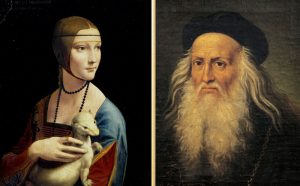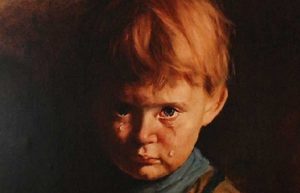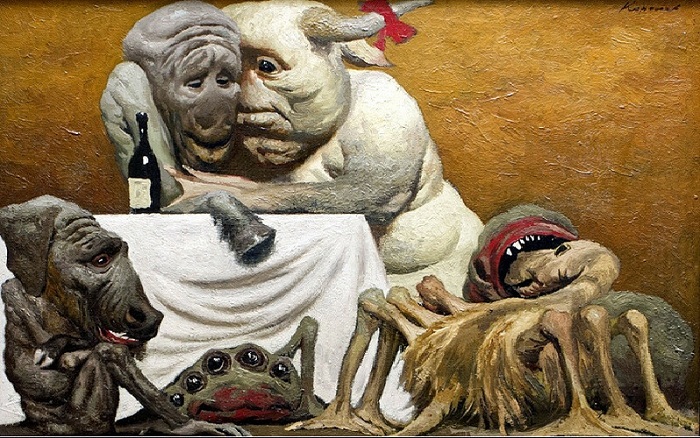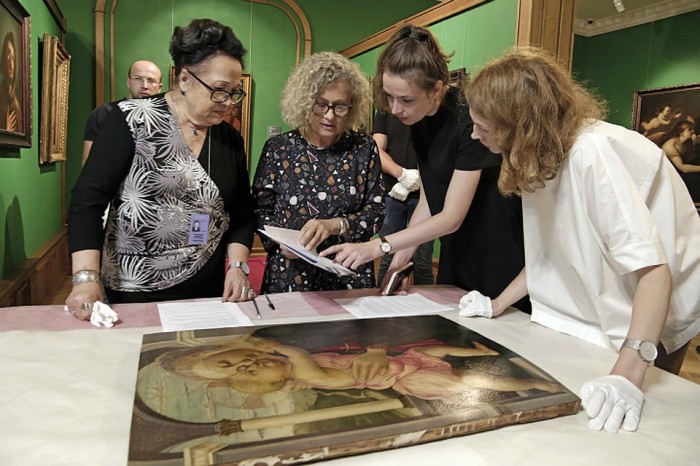immortalized
Secrets of “Ladies with an Ermine”: What does the cute animal in the painting of Leonardo da Vinci hide
 “The Lady with the Ermine” (1489-1490) is one of the most important works of all Western art, the subject of the greatest rarity of the genius Leonardo da Vinci and one of the four famous female portraits of the master. Modern art critics are sure – the white animal in the picture appeared for a reason.
“The Lady with the Ermine” (1489-1490) is one of the most important works of all Western art, the subject of the greatest rarity of the genius Leonardo da Vinci and one of the four famous female portraits of the master. Modern art critics are sure – the white animal in the picture appeared for a reason.
Transformation of the picture
To date, only a small part of the picture has remained genuine, the rest has been repeatedly retouched: the entire background was darkened, the dress was changed, and the transparent veil worn by the woman was repainted in combination with hair color. Another adjustment of the unknown restorer was the addition of dark shadows between the fingers of her right hand (upon careful examination of the two lower fingers it is noticeable that they are significantly inferior to the others). However, the most important discovery of the picture was that the Italian artist did not write the work in one stage, but in three clearly distinguishable stages. Continue reading
Secret meanings of Brueghel’s visual “Flemish proverbs: Reflection of the essence of man and being
 Northern Renaissance Master Brueghel the Elder is a Dutch Renaissance artist and engraver known for landscapes and peasant scenes. He was sometimes called the “peasant Brueghel.” He portrayed his incredible Dutch proverbs more than 450 years ago. This painting, also known as “The World Upside Down,” is a detailed masterpiece visually representing more than 100 Dutch proverbs.
Northern Renaissance Master Brueghel the Elder is a Dutch Renaissance artist and engraver known for landscapes and peasant scenes. He was sometimes called the “peasant Brueghel.” He portrayed his incredible Dutch proverbs more than 450 years ago. This painting, also known as “The World Upside Down,” is a detailed masterpiece visually representing more than 100 Dutch proverbs.
The plot of the picture
The canvas of the XVI century, painted in oil on oak and measuring 64 by 46 inches, is spelled out with many miniature men, women, children and animals who perform a number of unusual and bizarre actions in their village. Individual scenes are played side by side, without direct dependence on each other. The background for all this diverse activity consists of a rural house, dilapidated huts, a stone bridge with columns and a tower, a village square in the center and a manor among corn fields. In the distance, the open sea shining in the sun is visible. The old name of the painting “The World Upside Down” comes from the globe, standing on a symbolic head. This is intended to illustrate that people are in a world in which everything is not as it should be. Continue reading
The riddle and curse of the “Crying Boy”: Why Amadio was called the devil painter
 The Italian painter Bruno Amadio, who worked under the pseudonym Giovanni Bragolin, is considered to be the most dramatic and sinister artist in the history of art of the 20th century, who was called the devil painter. His name, in particular, is associated with a terrible story that terrifies many who have encountered his creation “The Crying Boy”, covered in a terrible legend, rumors and speculation.
The Italian painter Bruno Amadio, who worked under the pseudonym Giovanni Bragolin, is considered to be the most dramatic and sinister artist in the history of art of the 20th century, who was called the devil painter. His name, in particular, is associated with a terrible story that terrifies many who have encountered his creation “The Crying Boy”, covered in a terrible legend, rumors and speculation.
A few words about the artist
Bruno Amadio (Giovanni Bragolin) was born in 1911 and lived a fairly long life, leaving a number of art paintings that depict crying children. Despite the fact that the artist lived in the last century, very little information has been preserved about him. After his life, there were practically no personal photos left, he never gave interviews to journalists, art historians did not write their reviews about him. It is only known that in the war years he was a member of World War II, who fought on the side of Mussolini. At the end of the war he moved to Spain, and already there he changed his real name from Bruno Amadio to Giovanni Bragolin. Later he lived and worked in Venice, was a restoration artist. Continue reading




